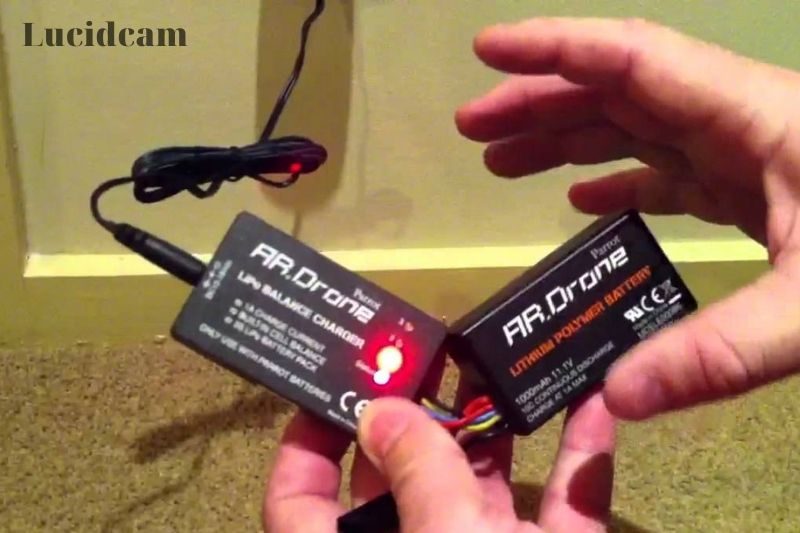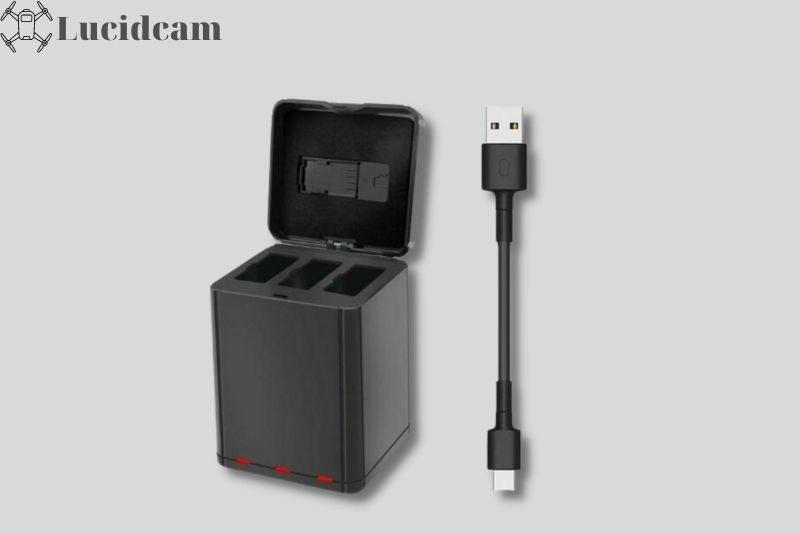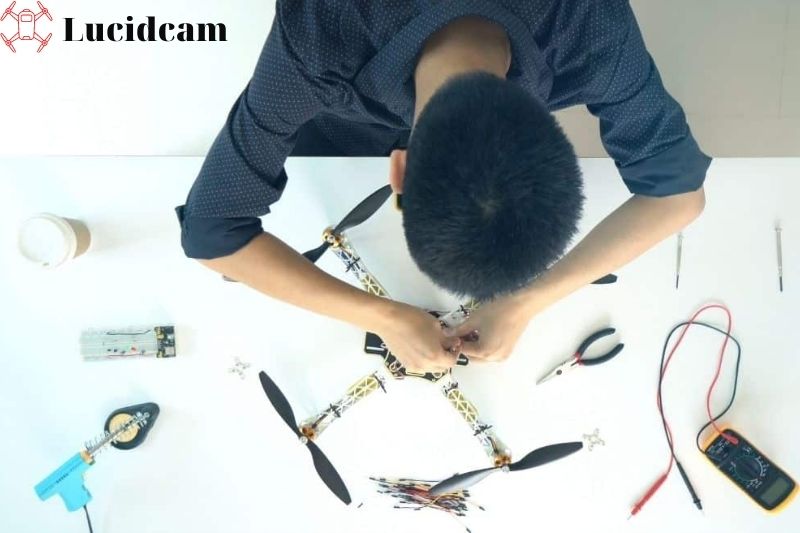How to Charge a Drone Battery Without a Charger
In today's world, personal drones are a vital tool for many professionals in the field of aerial photography and videography. With a personal drone, a professional can take a video or a photograph from a bird's eye view. But, to take the best picture or the best video, the battery must be fully charged. How to charge a drone battery without a charger?
In this article, you will find two ways that can help you how to charge drone battery without charger.
Overview
Drones use big batteries to manage powerful storms. You will need a larger battery. A simple solar panel USB charger might be sufficient to charge your phone. It is unlikely to supply enough current to charge a drone's battery.
There are a few industrial options that could power your drone batteries without an AC socket. But I decided to build my own…
If we want to compare apples with apples, or batteries with batteries, then we need to convert the potential storm in the usual milliampere-hours (mAh) listing evaluations into 5 hours (Wh).
Milliampere-hour battery (mAh) capacity is dependent on the voltage. Watt-hours (Wh), however, is the amount of electricity the battery can provide for more than an hour (when voltage is understood).
It is very easy to calculate: (mAh)*?V)/ (/ )000 =(Wh). We will use this as our calculation voltage. The nominal operating volt for a lithium-ion battery is generally 3.7V.
The Mavic Pro is a Mavic Pro that I have used ($850 on Amazon). I will use the Mavic battery ($80 on Amazon) to cover the cases. You can still accommodate the talk to any drone battery.
Mavic's battery is 43.6 Wh (3830mAh score, 11.4 functioning voltage/1000).
Your Mavic will usually return home with a $30 fee, so you won't ever have to fully charge it. You'll only need to use 70% of the storm or 30.5 Wh.
It is important to be familiar with the input and output signals of official DJI ($40 Amazon), and aftermarket ($16 Amazon) DC car chargers. The input voltage for your Mavic Pro is 12-16V with an output of 13.2V or 6A.
This is important for two reasons. The first is that the input vol must fall within the specified range or the charger will not charge the battery. You will also need an input voltage that can discharge 6A worthiness. This is a lot of electricity, and far beyond the capabilities of most small wind turbines or mobile solar panels. ( In comparison, USB chargers deliver 5V at just 2A or less)
An inverter is used to convert DC input to AC. This will allow you to plug your drone into an AC charger. However, this can lead to a lot of inefficiency and voltage issues. It is better to use a DC-DC charging station whenever possible.
Before you can decide how much you will have to invoice your drone batteries off-grid for, you need to think about your specific requirements. Are you looking for a few extra flights or many fees over a long period of time?
How To Charge Drone Battery Without Charger

Target Zero Sherpa 100
Goal Zero Sherpa 100 is the best I've found ($360 on Amazon). This video demonstrates the capabilities of Goal Zero Sherpa 100.
The Goal Zero Sherpa 100 looks like a good system to charge your phone batteries, camera, or drone batteries, and any other electronic equipment that you have.
A 12V DC output interface is one of the most impressive features. This means that if your drone has a car charger, it can be charged directly from DC to DC without needing to transfer electrons to an AC inverter.
Although the Goal Zero Sherpa 100 is a bit more expensive at $360 it was still the best option for me if I had extended backcountry trip.
DroneMax M10
The DroneMax M10 can be used to power two additional flights.
The DroneMax M10 battery is graded at 99Wh. This means that you can make slightly more if your battery is just 70% depleted.
However, new drone batteries cost between $60-$80 on Amazon. This means that you won't save a lot of money by buying just two more batteries.
Use the USB Port to charge a Li-ion battery
If you have an urgent need to charge your lithium-ion battery (6600-37) without a charger, it is best to use a USB port to do so.
It is easy and complicated to charge a 6600-37 li-ion battery using a USB port. Let's take a look at these steps to make your job easier:
A USB cable that is similar to a phone charger can be purchased.
Connect the USB end of your computer, printer, power bank, or another electronic device that supports the USB port to your laptop, desktop, printer, camera, or any other electronic device with USB ports.
- Take your device and connect the charging cable to it.
- Next, turn on your computer or laptop or any other suitable device.
- Your battery will be charging quickly.
Safety Tips
- While you're trying this trick, make sure to follow the safety tips below. This is essential for your safety and the safety of your device.
- Charge the battery by placing it in the device to see full battery voltage.
- Charge only one device at once from the USB port.
It is important to never charge your battery with more than 500aM of current, as it could cause a system failure.
Is USB Charging Bad for the Battery?

It's safe to charge your phone with your computer or laptop. If you're in a rush, however, there may be a problem. It will take longer for the battery to charge than it will receive fast charging. You should be patient when charging your battery via a USB port
It's dangerous to charge your smartphone via a USB port if it isn't already. Why? The USB host is unable to supply a stable current or charge your battery. Charging a lithium-ion battery with a USB port can cause damage to the chemical components. It can also damage your smartphone. It's best to always have your battery charger. It's better to have a spare charger in case you lose it. This will protect your phone from damage and your wallet.
Solar Panel for Charging Lithium-ion Battery (10-36).
You might be wondering how to charge my Lithium-Ion Battery with a Solar Panel. You can, I assure you. You can also charge your lead-acid battery. You will need a charger controller if you want to charge your battery from the solar charger.
Without one, the solar charging system cannot charge any battery. If you wish to charge your solar panel's battery, you will need a solar charger controller (6600-45 or the best quality solar inverter (5400-50). You can't leave this option.
Clip Charger to Charge Lithium-ion Batteries

A clip charger is another option to charge your lithium-ion batteries. You will need to remove the battery from your phone or another device in order to charge it with a clip charger. Next, place the battery onto the charging platform of your clip charger. Then, plug the charger into the power board and turn it on. It will charge your battery quickly and easily.
This type of charger is very rare nowadays. You are lucky to have one. A universal USB clip charger (10-44) can be purchased on the market. It's easy to carry around, such as the Lenmar PPUCLIP universal USB clip charger or Emerging Power EPSC battery charger 3.7VDC 0.82Ax2. You can also use this universal charger to quickly charge a 3.7V li-ion battery (90-30) when you are in a crisis.
Car Battery Charger for Lithium-ion Battery
Are there any other options for charging a li-ion battery with no charger (10-11?)? Cool down. Another option is to cool down while you drive your car. It is possible to charge your car's battery easily. How do you do it? It's easy. It is as easy as connecting the battery to your car's lead-acid battery. You will need small light bulbs to regulate the current flow when charging your battery in this clever manner.
You may be wondering how many small light bulbs you should use. Three small light bulbs are required to charge a 13V battery in your car. To charge the battery, you will need to place three light bulbs in parallel. The battery will be charged at 0.5 amps. Wait for about 10-15 minutes. The battery will be charged enough to allow you to use it.
Safety Tips
- To avoid injury or mischief, ensure you follow these safety tips:
- When charging, do not leave the battery unattended.
- Do not allow your battery to reach its maximum capacity. This could prevent your battery from catching fire.
- You should wear a safety mask and glasses when charging your battery, as sparks or ignition could occur.
Charging Lithium Battery from an Alternative Battery
There is another way to charge a lithium-ion battery using a USB charger (20-36). This simple method requires you to purchase 3 AAA batteries in order to quickly charge your battery. When you receive the batteries, connect them all together.
Each battery has 1.5V, so the three batteries will create 4.5V. To fully charge a standard cell phone battery, it needs 3.7V. The three AAA batteries, however, will provide 4.5V. They will charge your battery quickly and easily. One thing to remember is that you shouldn't use too much voltage when charging your battery. This could cause damage to your battery cells.

Another veteran move. It is always a good idea to carry extra batteries. You should also ensure that you don't buy cheap imitations.
For instance, the DroneMax M10 is a great drone to have around. It has enough battery capacity to last for several more rounds. This isn't a cheap way to do the job.
Create Your Own Charger
If you are unable to find the charger or have forgotten it, you can make your own. However, this is not recommended as it would be a "desperate times demand for desperate measures" situation.
Because the battery draws voltage, its capacity is measured in milliampere-hours or mAh. Instead, convert it to watt-hours (Wh) which is the amount of energy any battery can produce for approximately an hour if you know its voltage.
This formula can be used to calculate it:
(mAh) x V)/1000 = Wh
The basic operating voltage for Li-ion batteries is approximately 3.7 volts. Let's use that base voltage to charge a Mavic battery. You can also extrapolate this value for other batteries. These batteries are rated at 43.6 Watt-hours due to their operating voltage of approximately 11.4 volts and 3,830mAh.
After a hard day of work, drone owners typically return with a 30% charge. To reach maximum capacity, you will need to charge the remaining 70%. This is approximately 30.5 watt-hours.
Car chargers can be used to get you there. These chargers are DC chargers. A Mavic Pro's input voltage and output voltages are 12.16 volts and 6. amps, respectively.
For the charger to function, it is essential that the input voltages of the charger and battery be the same. The input source must have at least six amps of power. A regular USB charger should be two amps.
An inverter can be used to boost the AC input, but it is not very efficient. A DC to DC system is the best option. You will also need to determine if multiple flights require charging. This can be done by checking the flight time of your original battery after it has fully charged.
If you need to charge a lithium-ion battery, you can also use a portable car jumper battery. You will have enough power to charge your device for at least one more flight.
Semi-Diy Option To charge Drone Batteries OFF-Grid

If you're only going to be away from an AC outlet for a few days and you are only looking to get one extra flight, a much simpler and cheaper option is to just bring a fully charged high capacity battery with you.
These are the two options available to charge your drone's battery for at least one more flight.
Power Bank for Laptop Travel Chargers – 90 Watts
This battery is $100 on Amazon and has a 90 Wh capacity (24.000mAh rating x 3.75 li-ion voltage/1000). It should provide enough power to charge at least one drone's battery.
It is small, weighs only 624g (or 1.4 lbs), and has an AC inverter built-in so that you can plug it directly into your regular AC drone battery charger.
It doesn't have direct 12VDC out, so it isn't efficient. You can increase the output of this battery to AC, then lower it back to DC to charge your drone battery. This makes it less efficient.
It is still quite expensive at $100, however, when compared to other flight batteries.
Portable Battery Power Bank 130Wh
This 130Wh drone charger (rated at 35000mAh x 3.7 Li-ion base voltage/1000) can be charged directly to DC via a 12V DC output ($100 – Amazon).
The micro-usb can be used to charge the battery. However, if you're really out of the grid, you can also charge it with a solar panel charger. This is not practical as it takes a long time.
If you're trying to charge a Mavic, the DC output port can only handle four amps. This may cause the battery to be less than the minimum input current threshold. (I haven't tested this battery, so I don't know for certain).
18000mAh Portable Car Jump Starter
This car jump starter battery ($70 Amazon) is another lithium-ion battery that can provide enough juice to charge your drone's battery.
The battery is small and lightweight (listed at 500g/1.1 pounds). Although it has a smaller capacity, this battery is a lot less expensive than the other options.
This battery is intended to be a portable car jumpstarter with a 12V/300A jump port. However, it also has an ordinary 12DC output port so that you can charge your drone batteries DC-DC without using an inverter or car charger.
Similar car battery jump starters were unsuccessful. I tried one with 70 Wh, and it didn't charge at all. If you are curious, your drone battery charger can be connected directly to the 12V/300A car batteries jumper leads. This is in case you don't have a 12V output port.
The cost of the drone is not worth it. You can buy another drone battery for $70.
FAQs
How do you charge a drone battery?
It is safer to charge your drone batteries outdoors, where they are less likely to catch fire. Because a battery can explode, releasing toxic gases into the air.
Indoors, this can increase the danger. The battery can overheat if it is exposed to direct sunlight. Keep them out of direct sunlight and from dried-out plants.
If you need to do so indoors, there are some steps to contain the fire if one exists. To extinguish a fire, you can either charge them with cinder blocks or a bucket of sand. It is important not to keep the container in a fireproof place as this could cause an explosion and pressure the energy.
How long should my drone battery be charged?
Most consumer drone batteries take anywhere from 60 to 90 minutes to charge. It also depends on whether the USB charging cable is used or a charging hub. A charging hub can charge your drone faster than USB charging, but it will take more time to charge your device.
How can I charge my LiPo battery without a charger?
A power supply can be used or a USB port. The best option is to choose the first option. You can also use another set of batteries with the same cycle voltage and rate. You can charge them using a USB port, but this will take longer. Be prepared. This is also dangerous, so make sure you consult a professional before doing it.
How do you charge a drone battery using a USB cable?
The cord that came with your drone can be used. This is a USB cable, which can be plugged into your PC. A wall charger can be used to connect the USB cable to the connector on the drone's front. This method doesn't require you to take the drone's battery out.
Conclusion
If you want to buy a good and cheap drone, then the first thing you should do is check the battery. Maybe not all of them can be charged with your universal charger. It's better to find out before buying. If you think this article is helpful, please share it with others. And don't forget to subscribe to our newsletter so that you will never miss any new articles. Thank you for reading!
Check out a list drones have long flight time: Best Drones with Longest Flight Time: Top Brands 2021 Review For You
How to Charge a Drone Battery Without a Charger
Source: https://lucidcam.com/how-to-charge-drone-battery-without-charger/
0 Response to "How to Charge a Drone Battery Without a Charger"
Post a Comment